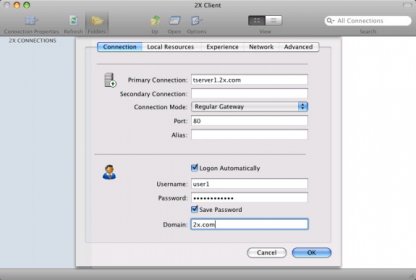

Canon shall not be held liable for any damages whatsoever in connection with the Content, (including, without limitation, indirect, consequential, exemplary or incidental damages).
#Wifi scanner for mac os x lion download#
You may download and use the Content solely for your personal, non-commercial use and at your own risks. Ultimately those latter functions and their uses are far beyond the scope of this article, but previously Mac users had to use third party apps like Kismet or boot from a separate Linux installation to access advanced network capturing abilities.All software, programs (including but not limited to drivers), files, documents, manuals, instructions or any other materials (collectively, “Content”) are made available on this site on an "as is" basis.Ĭanon Marketing (Philippines) Inc., and its affiliate companies (“Canon”) make no guarantee of any kind with regard to the Content, expressly disclaims all warranties, expressed or implied (including, without limitation, implied warranties of merchantability, fitness for a particular purpose and non-infringement) and shall not be responsible for updating, correcting or supporting the Content.Ĭanon reserves all relevant title, ownership and intellectual property rights in the Content. There are plenty of potential uses for this utility and the wireless stumbler, whether it’s optimizing networks, reducing interference and noise, or discovering those around you, but the wifi diagnostics app also includes many powerful features that allow you to capture network traffic, be it data that is sent from the computer in use or even all nearby wireless networks. The tool defaults to scanning once and displaying the found information, but you can turn on Active Scan or Passive Scan mode to constantly search for new networks by clicking on the “Scan” pulldown menu in the lower right corner. Under the Wi-Fi Scan tool, you will see all available network names and their respective BSSID, channel, band, protocol (wireless n, g, b, etc), security type, their signal strength, and the noise level of the signal. Select “Wi-Fi Scan” tab to summon the scanner and stumbler wireless networking tool.Open Wireless Diagnostics and ignore the menu, instead pull down the “Window” menu and select “Utilities”.If the app is called “Wireless Diagnostics”, to access the scanning utility is slightly different: Click the “Wi-Fi Scan” tab to get started with the wireless stumbler tool.Launch Wi-Fi Diagnostics and ignore the frontmost menu, instead hit Command+N to summon the new “Network Utilities” window (this is also where the wireless signal strength measurement tool is located now).If the app is called “Wi-Fi Diagnostics”, here is what you need to do: Outside of accessing the tool, all functionality remains the same. Newer builds of Mountain Lion (10.8) changed it slightly, and those changes are reflected in OS X Mavericks (10.9) as well. Now that you have the Wifi app in an easy to find location, using it is slightly different depending on your OS X version. Locate “Wi-Fi Diagnostics” (or “Wireless Diagnostics”, depending on OS X version) and drag and drop it into Launchpad or the OS X Dock for easy access.From any Finder window, hit Command+Shift+G and enter the path: /System/Library/CoreServices/.Making Wi-Fi Diagnostics Easier to Access in OS Xįor other versions of OS X, like OS X Mountain Lion, you’ll want to make the Wi-Fi Diagnostics app readily available by bringing it to LaunchPad or the Dock, to do that: This is obviously much easier in modern versions of Mac system software, but don’t worry if you’re not on OS X Yosemite, you can still access and use these tools with the directions below. This will open the wireless card to detect all possible nearby wifi networks, effectively stumbling onto available wireless routers and discovering details about those networks.Īll available wireless network names, SSID, channels, band, network protocol (wireless n, g, b, etc), the network security type, the network signal strength, and the network noise level of the signal discovered will be listed by the scan utility. Within the Scanner tool, click on the Scan button to scan for available networks.


#Wifi scanner for mac os x lion how to#
Now that you’re in Wireless Diagnostics, here’s how to use the Scanner: Scanning for Wi-Fi Networks with the Mac Wireless Diagnostics Tool This is somewhat hidden, but still much easier than accessing it in prior releases of OS X where the app was basically hidden. Option+Click on the Wi-Fi menu item in OS X.In modern versions of Mac OS X like OS X Yosemite, OS X Mavericks, you can get to Wireless Diagnostics from the Wi-Fi menubar item: Accessing Wireless Diagnostics in Mac OS X



 0 kommentar(er)
0 kommentar(er)
